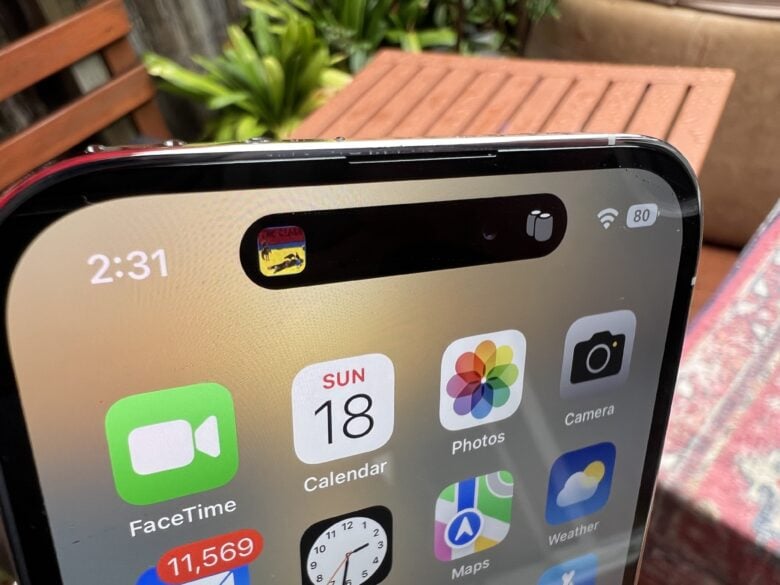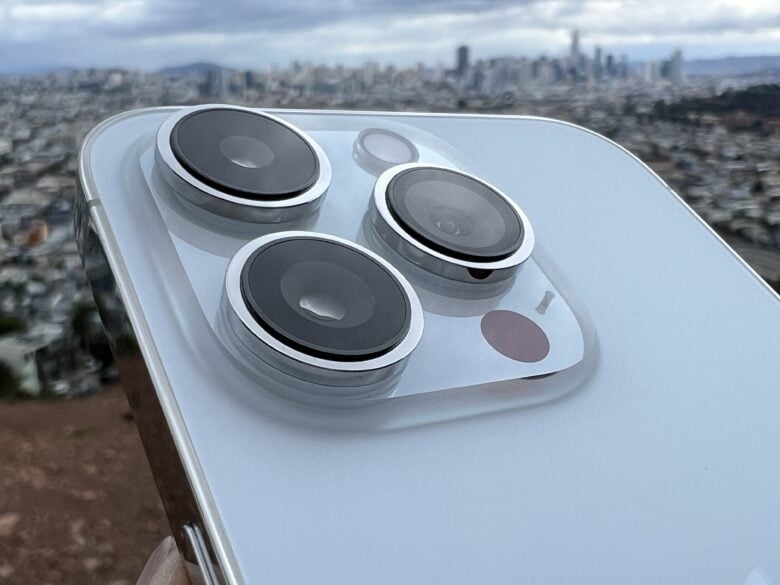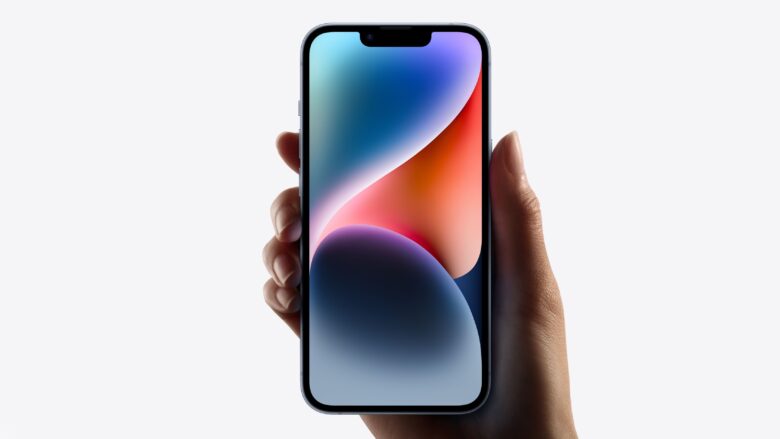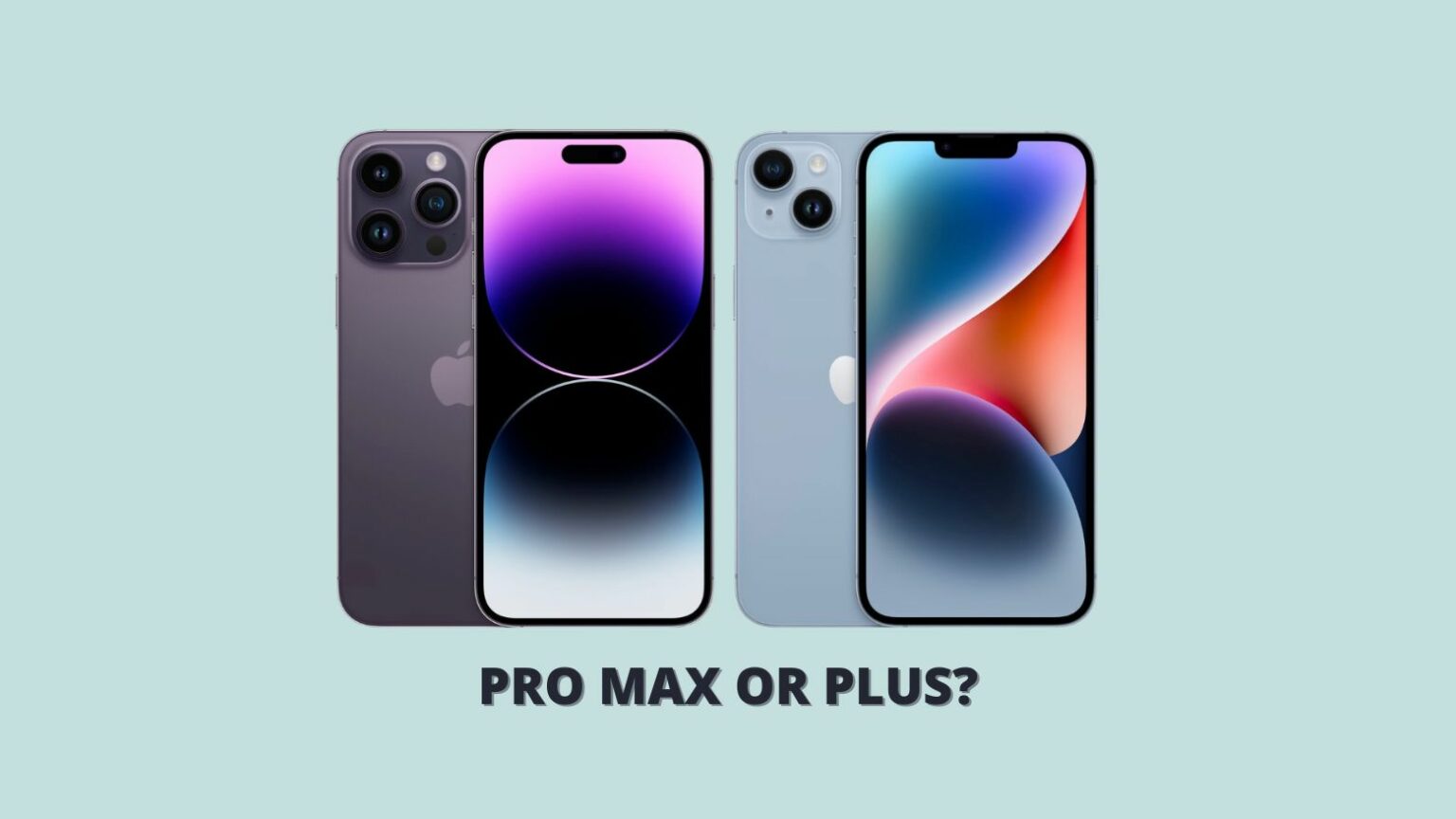If you want an iPhone 14 with a large screen, you now have two choices: iPhone 14 Plus and iPhone 14 Pro Max.
That’s because Apple tweaked its iPhone 14 lineup this year, replacing the “mini” model with a “Plus” variant. The new iPhone 14 Plus comes with a 6.7-inch display, giving it similar dimensions to the iPhone 14 Pro Max. However, it comes with different features — and a smaller price tag.
So, what compromises did Apple make to reach that lower price point? And, if you want a large iPhone, which model should you buy? Read our comparison of the iPhone 14 Plus and iPhone 14 Pro Max to find out.
iPhone 14 Plus vs. iPhone 14 Pro Max: Buying guide
While the iPhone 14 Plus and the iPhone 14 Pro Max both deliver an excellent large-screen smartphone experience, the differences between this year’s Pro and standard models seem more stark than usual.
From the chips inside to the camera arrays to the user interfaces, Apple served up very different devices in 2022. The iPhone Pro versions offer various advances you won’t find in the regular iPhone 14 models. But all that innovation comes at a price.
Our iPhone 14 buying guide will help you make the right choice for your needs.
Table of contents
- Design: Not the same
- Display: The notch vs. the Dynamic Island
- Performance: A15 Bionic vs. A16 Bionic
- Camera: 12MP vs. 48MP
- Connectivity and sensors: Nearly all the same!
- Battery life: They’re both monsters, but iPhone 14 Plus wins
- Price: $899 vs. $1,099
- Conclusion: iPhone 14 Pro Max vs. iPhone 14 Plus: Which should you buy?
Design: Not the same

Photo: Apple
- iPhone 14 Plus: 160.8mm x 78.1 mm x 7.8mm; weight: 203 grams; IP68 water and dust resistant up to 6 meters
- iPhone 14 Pro Max: 160.7mm x 77.6mm x 7.85mm; weight: 240 grams; IP68 water and dust resistant up to 6 meters
The iPhone 14 Plus retains the same design as the regular iPhone 13 from 2021 — it just has a bigger aluminum chassis to accommodate the 6.7-inch display.
The iPhone 14 Pro Max uses a stainless steel chassis, so it has better build quality. But that makes it a bit heavier (240 grams versus 203 grams) as well. Still, if you ever used any Pro Max variant of the iPhone before and found it too large or heavy to use one-handed, the slightly lighter iPhone 14 Plus is unlikely to change anything.
The iPhone 14 Pro Max comes in four relatively dull colors: space black, deep purple, silver and gold. The iPhone 14 Plus comes in five bolder colors, including midnight (black/navy blue), starlight (white), purple, blue and (Product)Red. Both phones are IP68 certified, meaning they are dust and water-resistant.
Display: The notch vs. the Dynamic Island

Photo: Leander Kahney/Cult of Mac
- iPhone 14 Plus: 6.7-inch Super Retina XDR display, OLED, 2778 x 1284 pixel resolution, 458PPI, 800 nits max brightness, 1,200 nits peak brightness, HDR10, Ceramic Shield protection
- iPhone 14 Pro Max: 6.7-inch Super Retina XDR display, OLED, 2796 x 1290 pixel resolution, 460PPI, 1,000 nits typical brightness, 2,000 nits peak brightness, HDR10, Ceramic Shield protection, 120Hz ProMotion, Always-On display
The iPhone 14 Plus and iPhone 14 Pro Max have identically sized displays: 6.7 inches. But they are very different from each other. The Super Retina XDR display on the iPhone 14 Plus only refreshes at 60Hz, misses out on the 14 Pro Max’s Always-On display, and achieves lower brightness levels (1,200 nits peak).
While offering roughly the same screen resolution, the iPhone 14 Pro Max adds the Always-On display as well as ProMotion technology, which enables adaptive refresh rates up to 120Hz. It’s also much brighter: It reaches an eye-searing peak outdoor brightness of 2,000 nits.
The highlight of the iPhone 14 Pro Max’s display is Dynamic Island, though. Apple uses the expandable pill-shaped area, which replaces the regular iPhone 14 models’ static screen cutout (aka the notch), to show relevant information from apps at a glance. It enables a new way to interact with your iPhone and blends the line between hardware and software in a way that’s typical of Apple’s expertise.
Performance: A15 Bionic vs. A16 Bionic
- iPhone 14 Plus: A15 Bionic, five-core GPU, 5nm fab, 16-core Neural Engine
- iPhone 14 Pro Max: A16 Bionic, 4nm fab, 50% more memory bandwidth, 16-core Neural Engine
This is the first time since the inception of the iPhone Pro that Apple reserved its best chip for the high-end models. The iPhone 14 Pro Max uses the 4nm-based A16 Bionic chip, while last year’s A15 Bionic is ticking inside the iPhone 14 Plus. The enhanced, five-core GPU variant of the A15 Bionic previously showed up inside the iPhone 13 Pro series.
Apple claims the A16 Bionic is its “fastest chip ever in a smartphone.” Benchmark scores suggest that does seem to be the case. Based on Geekbench numbers, the A16 Bionic is about 18% faster than last year’s chip. But given that A15 Bionic is already plenty fast, you won’t notice the performance improvements immediately.
All iPhone 14 models come with 6GB RAM. But the Pro models use the faster LPDDR5 standard that is faster, more power-efficient, and provides more bandwidth.
The additional horsepower of the A16 Bionic is unlikely to make any immediate difference. But a few years down the line, the extra horsepower will come in handy when running heavy apps and games.
Camera: 12MP vs. 48MP

Photo: Leander Kahney/Cult of Mac
- iPhone 14 Plus: 12MP f/1.5 primary camera, sensor-shift stabilization; 12MP f/2.4 Ultra Wide camera with Macro photography capability; True Tone flash, Photonic Engine, Deep Fusion, Cinematic mode (4K@30fps), Action mode; front-facing 12MP camera with f/1.9 aperture, autofocus
- iPhone 14 Pro: 48MP f/1.78 primary camera, second-gen sensor-shift stabilization; 12MP f/2.8 telephoto camera with 3x optical zoom; 12MP f/2.2 Ultra Wide camera with bigger 1.4um pixels and Macro photography capability; Adaptive True Tone flash, Photonic Engine, Deep Fusion, Cinematic mode (4K HDR@30fps), Action mode; front-facing 12MP camera with f/1.9 aperture, autofocus
On paper, the iPhone 14 Pro Max packs a vastly superior triple-camera setup compared to the dual-camera array on the iPhone 14 Plus.
The Pro model comes with a bigger primary camera, with a much higher 48-megapixel resolution. Using pixel binning, the phone can capture more detailed shots. However, to get the most out of the bigger camera sensor, you will have to shoot 48MP ProRAW photos on your iPhone 14 Pro Max. And you will need to be prepared for very large files sizes.
The iPhone 14 Pro Max’s Ultra Wide sensor is also bigger and uses a faster f/2.2 aperture, with Macro functionality being a bonus. Lastly, you get a dedicated 3x telephoto camera on the Pro model for up to 30x digital zoom, which is entirely missing from the iPhone 14 Plus.
Living up to its Pro name, you can shoot photos in Apple ProRAW and record videos in ProRes resolution on the iPhone 14 Pro. This is not possible on the iPhone 14 Plus.
In real life, there’s not much difference
Despite the superior camera hardware, reviews indicate there’s not much difference in the imaging performance of the two phones. The iPhone 14 Pro’s 48MP snapper is impressive but does not bring a massive leap in image quality as Apple promised.
Regarding camera features, you get Photonic Engine, Night mode, Photographic Styles, Cinematic mode and Action mode on both phones. The additional camera benefits on the iPhone 14 Pro Max include Night mode portraits, Macro video recording, and higher optical/digital zoom levels.
The front-facing TrueDepth camera system on both iPhone 14 models has been upgraded. You get a 12MP camera with f/1.9 aperture and autofocus support for better sharpness and low-light quality.
Connectivity and sensors: Nearly all the same!
- iPhone 14 Plus: Emergency SOS with satellite, high dynamic range gyro, car crash detection, dual eSIM slots, Wi-Fi 6, Bluetooth 5.3, GPS.
- iPhone 14 Pro Max: Emergency SOS with satellite, high dynamic range gyro, car crash detection, dual eSIM slots, Wi-Fi 6, Bluetooth 5.3, dual-frequency GPS.
The iPhone 14 Plus and iPhone 14 Pro Max are very similar in terms of connectivity. They both support 5G (mmWave and sub-6GHz), Gigabit LTE, Wi-Fi 6, Bluetooth 5.3, NFC and an Ultra Wideband chip.
Apple equipped the two phones with a high dynamic range gyro, high-g accelerometer, and dual ambient light sensors. They also feature Emergency SOS via satellite and car crash detection.
None of the iPhone models feature a physical SIM card slot, at least in the United States. You must use an eSIM. However, on the bright side, both models support dual eSIMs.
The only connectivity difference between the two phones is the lack of precision dual-frequency GPS on the iPhone 14 Plus. It allows the iPhone 14 Pro to provide more precise location data, even in challenging conditions.
Battery life: They’re both monsters, but iPhone 14 Plus wins

Photo: Apple
Apple says the iPhone 14 Plus offers the best battery life ever in an iPhone. This is thanks to its combination of the 60Hz 6.7-inch AMOLED panel and a big battery.
The iPhone 14 Pro Max is also a battery champion, and will easily last two days on regular use. But reports from iPhone 14 Pro Max users suggest its battery does not last as long as the iPhone 13 Pro Max. Nonetheless, it should survive a day of heavy use with ease.
The devices are nearly identical in the charging department as well. When using a 20W or higher power adapter, you can top up the battery from 0% to 50% in 30 minutes. A full charge will take well over an hour, though. Both models also benefit from MagSafe wireless charging, with speeds topping out at 15W.
Price: $899 vs. $1,099
The iPhone 14 Plus starts at $899 in the United States, while the iPhone 14 Pro Max starts at $1,099. This is for the entry-level models, which come with 128GB of storage.
The jump to the 256GB storage tier will cost you another $100 for either model. Bumping up to 512GB of storage adds $300 to the base version on each model. A 1TB option, available only on the Pro model, tops out at $1,599.
No matter which storage option you choose, Apple will make you pay a $200 premium for the additional features you get on the iPhone 14 Pro Max.
Conclusion: iPhone 14 Pro Max vs. iPhone 14 Plus: Which one should you buy?
Apart from a lower price tag, the iPhone 14 Plus offers a stellar battery life going in its favor. And if you don’t care about the absolute best camera performance or a stainless steel chassis, the iPhone 14 Plus will more than work for your needs.
But if you have the money to spare, the iPhone 14 Pro Max is a no-brainer. The 120Hz ProMotion display, Always-On display support, a 3x telephoto camera, better Ultra Wide camera, and a faster chip make it worth the additional $200.


